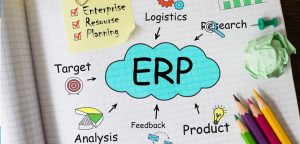Implementing ERP – Perhaps the most overlooked piece of business IT advice is “Change management impacts ERP deployment success.” However, that does not lessen its significance.
ERP provides enormous commercial benefits, but only if it is broadly used. That means CIOs and other executives must put people first.
Indeed, the human aspect can make or fail an Implementing ERP , and all too frequently, it is the latter.

While some degree of resistance to change is unavoidable, lousy change management is the most significant error you can make while deploying an ERP Software solution in 2022.
Change management should not be viewed as a separate step of the ERP deployment process. Instead, it is an essential component in brainstorming various implementation management solutions. As a result, it should penetrate the ethos of the project team and be thoroughly ingrained in the approach.
This post will go over five essential change management tactics for a smooth ERP Implementation:
1. Strategize a smooth Implementing ERP
The primary users of ERP software are always concerned about how the implementation process will impact their day-to-day functioning. It’s critical to brainstorm a smooth post-implementation strategy that will clear all their doubts and explain the importance of ERP software. Moreover, create a workflow and assign duties accordingly to achieve the optimum use of ERP.
2. Communicate with business stakeholders
A change management strategy allows communication between top management and subordinate executives. Talking with business stakeholders is crucial as it will enable them to understand the impact of change management strategies. Each communication plan must include the project scope, milestones, deliverables, success factors, failure risks, and how to implement new solutions.
3. Align the organization with future goals
Take a look at your organization and create a detailed description of each department’s business processes and improvement areas. Keep track of how all the branches across multiple locations are doing every day. Prepare a foolproof transformation plan once you have collected all the details of your organization.
4. Prepare a powerful argument for change
It is critical to explain the benefits of Enterprise Resource Planning software to every person in the corporate hierarchy to eliminate opposition to the adoption process. It is crucial to convey the project scope and rollout management techniques to key stakeholders, including workers, vendors, suppliers, distributors.
5. Plan a smooth implementation phase
Once the ERP deployment process is complete, your firm will undergo a total transformation. As a result, you must teach your workers to make the best use of the program.
During this phase, you must identify your employees’ talents and experiences and map the skills they may need to learn when the implementation phase is complete. It is also possible that you may need to acquire additional staff with particular expertise to handle industry-specific capabilities in the ERP software.

And lastly
It is also an essential aspect of change management techniques to demonstrate to relevant parties, consumers, and suppliers how their job will be influenced once the implementation phase is complete.
We are the home of world-class ERP software and CRM software that can strengthen your company’s tech support basics and empower you to establish a customer-centric organization at Connected IT Consulting.
You may also contact us via email at hello@connectedit.consulting or call us at 015415471.
Related Links
ERP Project Management
Business Process mapping
Small Business ERP
ERP Consulting



